Eco-IP transformation and the realistic benefits for businesses
A project named Eco-Industrial Park Intervention in Vietnam, funded by the Swiss State Secretariat for Economic Affairs and implemented by the Ministry of Planning and Investment in collaboration with the United Nations Industrial Development Organization (UNIDO), introduces and implements eco-industrial park (eco-IP) principles in existing facilities.
The existing facilities in question are in the northern city of Haiphong (DEEP C), Ho Chi Minh City (Hiep Phuoc IP), and the southern province of Dong Nai (Amata IP). The project focuses on facilitating the transformation of the selected complexes into eco-IPs through capacity building on strategies and measures, the identification of solutions, and information dissemination.
As of October 2023, the project supported 68 tenant companies in three industrial parks on resource efficient and cleaner production (RECP) training, assessment, identification, and implementation of about 300 out of over 600 RECP interventions and 62 industrial symbiosis cases in order to reduce 23 million kWh of eletricity and 384,000 sq.m of water, while saving $3.1 million and reducing 24,000 tonnes CO2 equivalent every year.
These IPs are annually reviewed against international frameworks for eco-IPs to monitor their progress. The gaps identified through the review of the parks provided a strong basis to provide technical support to both park management and their tenant companies to move towards eco-IPs.
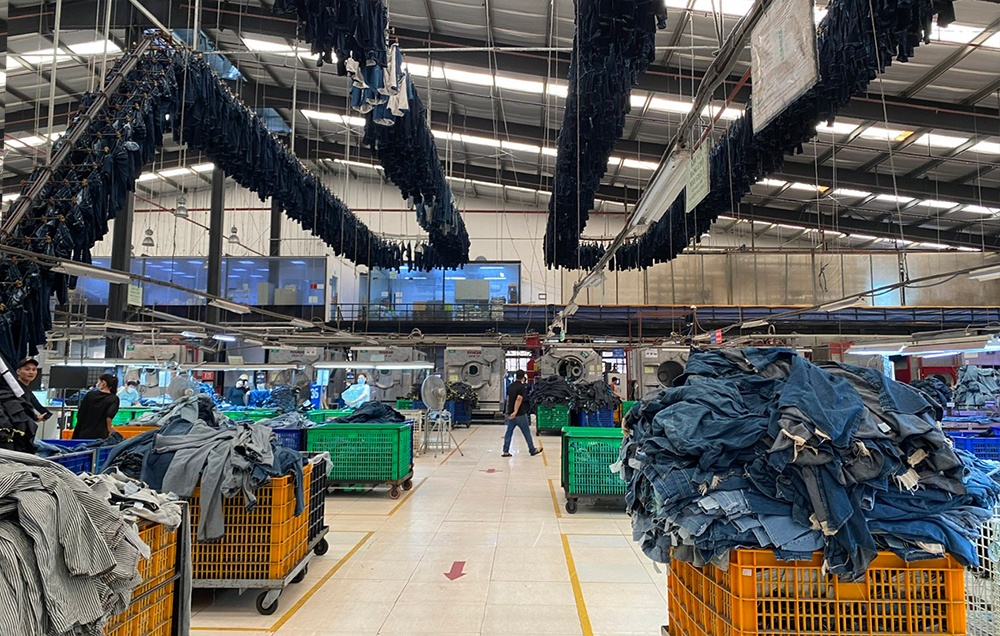 |
| Saitex International at Amata’s industrial park in Dong Nai province |
Huge savings possible
Take Shin-Etsu Magnetics Company is one such example. It invests in a closed rare earth magnet production line from raw materials to finished products at DEEP C IP. Almost all defective or damaged products are recycled in the manufacturing process to save resources, and minimise emissions towards sustainable development. The water flow control valves are installed at hand basins to reduce hand wash faucet flow from 15 to 6 litres per minute. The reuse of rejected water from the water purification system feeds into the magnet washing process.
These are among a number of no-cost solutions that contribute to reducing the cost of purchasing of around 5,250 cu.m of water per year, as well as the cost of wastewater treatment, which is equivalent to saving $8.5 million per year.
The company is considering investing in a wastewater recycling system including domestic water which is estimated to save about 7,000 cu.m per month of water, equivalent to $150,000 per year.
At DEEP C IP, nearly 140 solutions on resource efficiency and cleaner production have been identified for 19 participating companies to help to reduce 13.2GWh per year of electricity and more than 74,700 cu.m per year of water, equivalent to saving $1.7 million per year.
Elsewhere, Saitex International Dong Nai Co. Ltd. is one of 18 companies in Amata IP that has been supported to adopt eight solutions to gain annual savings of more than 687,600kWh of electricity, 4,900cu.m of water, and contribute to reducing 553 tonnes of CO2eq.
An air-drying conveyor belt spanning across the laundry plant dries clothes by utilising the hot air generated within the laundry room to shorten the time of garments in the dryers. As a result, Saitex cut down the power used for dryer machines by half, as well as reduced CO2 emissions.
Optimal boiler conversions
One manufacturer in DEEP C IP decided to replace the liquid petroleum gas boilers with a biomass fuel boiler (rice husks, rice husk pellets, agricultural by-products, and forest by-products) as the main source of fuel supplied in the local area.
The boiler is pre-installed with auxiliary equipment such as an economiser to utilise flue gas heat for pre-heating the boiler feed water. The waste vapour will then be passed through the dust suppression system before being discharged into the environment to ensure emission parameters.
The motors and fans in the system are installed with a variable frequency drive to ensure better control and save electricity. The control system includes sensors and screens that display important operating parameters such as speed, pressure, and temperature.
The financial benefit is over $2 million per year and the payback period is about three months and the reduction of over 5,000 tonnes of CO2eq per year.
At a paper company in Hiep Phuoc IP, the old vacuum system with a total capacity of 2,000kW was replaced by a new system of three vacuum pumps with a total capacity of 1,200kW and the installation of inverter control to save about 40 per cent of electricity consumption.
However, the system failed during its operation and the inverter did not operate at the required load, leading to an increase in power consumption.
The company checked and re-installed the new pressure sensors to connect the inverter system to ensure efficient operation, and this helped the company save 18 per cent of electricity. The results indicate that this solution reduces electricity consumption by 1,500GWh per year, saves nearly $106,000 per year with initial investment costs of $12,500 with a payback period of less than two months, and contributes to reducing nearly 1,200 tonnes of CO2eq per year.
Around 30 enterprises in Hiep Phuoc IP have benefited from UNIDO’s support. The enterprises have been guided to apply cleaner production and sustainable manufacturing in their production processes, resulting in an expected $3.87 million of savings.
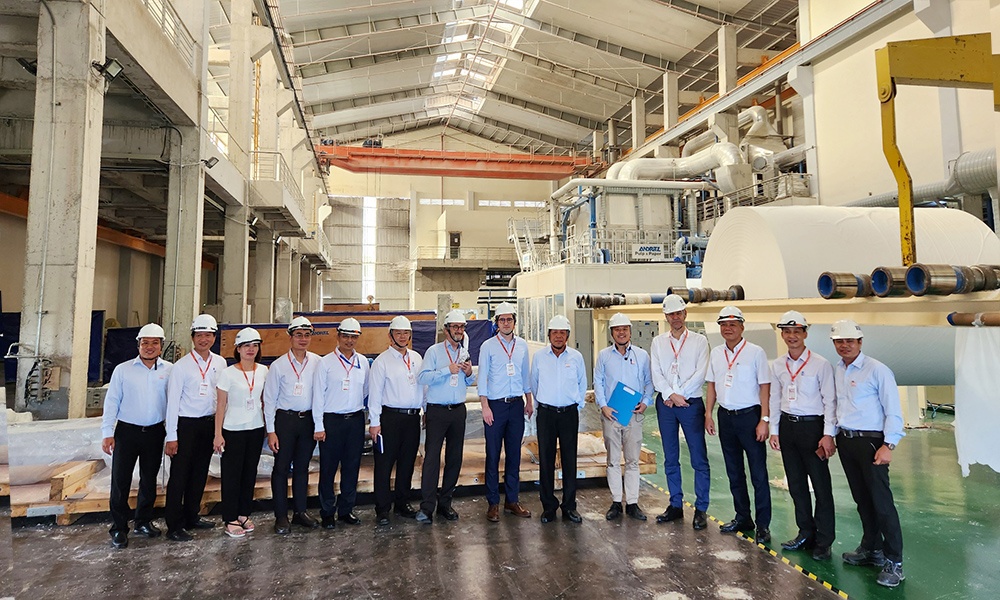 |
| The delegation of the Swiss government and the Ministry of Planning and Investment had a working visit at Hiep Phuoc Industrial Park in Ho Chi Minh City - Photo: UNIDO |
Solar and urban symbiosis
A solar rooftop power system with a total capacity of 104.4kWp is installed on the roof of Amata’s service centre building.
This is a grid-connected solar energy system with a set of solar panels to convert into DC and through the inverter power into AC power to mix with the national grid and supply it directly to appliances. If the solar power supply is not enough for the current load at the site, the grid power will compensate.
As of August 2023, the system has generated 526,000KWh and helped to reduce emissions of over 480 tonnes of CO2eq.
Vast unused roof spaces at the factories of IPs present an attractive investment opportunity for profitable solar energy systems. In an effort to become more sustainable and energy-independent, DEEP C plans to rent and install solar panels on its factory rooftops, which will meet the electricity demand of the tenant companies.
Some tenant companies at these IPs have voiced their urgent need to procure green electricity to fulfill the policies of companies to which they deliver their products and the policies of their head offices. These operations are also in line with the government policies on climate change issues and the Power Development Plan VIII to double the power generation capacity of wind, solar, and other sources of green electricity by 2030.
With a total of 62 symbiosis cases between tenant companies, the signing of an agreement between DEEP C IP and the Hai An Public Security Department in Haiphong is an excellent example of the urban industrial symbiosis between the IP and the urban area.
Hai An District is one of the central districts of Haiphong city with a high population density. The collaboration with a professional fire prevention and fighting team of three specialised fire engines and around 20 on-duty firefighters of Dinh Vu IP in any urgent mobilisation from the city’s fire department could help to reduce the risk of property damage for the community when fires occur.
Besides the companies in three selected IPs that were supported directly, more than 2,000 people have benefited from capacity building activities, such as training workshops on the identification and implementation of eco-IP opportunities. The successful application of the resource efficiency and cleaner production solution and others by pioneering enterprises in these IPs will be replicated with efforts and determination from planning to businesses contribute to sustainable development and improve competitiveness for businesses and industries across Vietnam.
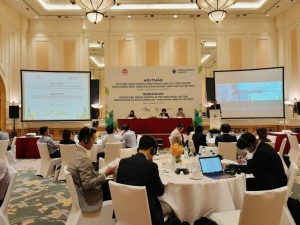 | Eco-industrial parks to become inevitable trend Vietnam will continue to encourage investors to both develop eco-IPs and transition from traditional to ecological ones, which is set to contribute to the national target of reducing greenhouse gas emissions. |
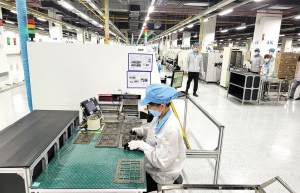 | Illustrating the critical need for top eco-industrial parks Vietnam is leaning towards international conventions when it comes to expanding its eco-industrial park strategy. Florian J. Beranek, lead expert of Responsible Business Development at the UN Industrial Development Organization, explains what this looks like, and how developers can be encouraged to go greener. |
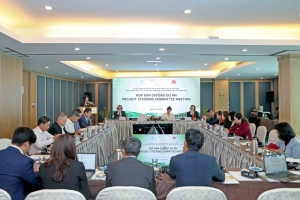 | Vietnam to promote eco-industrial parks with international partners The Steering Committee on the Development of Eco-industrial Parks in Vietnam, organised a meeting yesterday to discuss last year's results and set a course for the following two years of the scheme. |
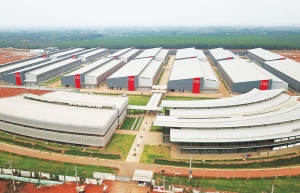 | Private sector urged to enter eco-IP arena Authorities have been urged to foster participation of the private sector to speed up the creation of eco-industrial parks, contributing to the government's green growth strategy. |
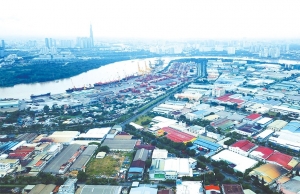 | Vietnam taking stock of industrial park capacities Many localities want to expand high-tech industrial parks to resolve the overload of existing parks and simultaneously welcome new high-quality capital. |
What the stars mean:
★ Poor ★ ★ Promising ★★★ Good ★★★★ Very good ★★★★★ Exceptional
Related Contents
Latest News
More News
- Heavy industries set for pilot greenhouse gas quotas (December 25, 2025 | 10:00)
- Swedfund invests in MSME growth and climate action in Vietnam (December 19, 2025 | 11:42)
- GreenYellow brings solar energy to light up remote schools in Tuyen Quang province (December 19, 2025 | 08:00)
- Charge+, Grab partner to develop EV charging network in Vietnam (December 18, 2025 | 17:11)
- Linking sci-tech and innovation to Vietnam’s net-zero future (December 18, 2025 | 14:31)
- Driving double-digit growth through green and circular transformation in Vietnam (December 17, 2025 | 09:00)
- Standard Chartered and ACCA deepen collaboration to develop Vietnam’s talent for a sustainable future (December 15, 2025 | 18:18)
- Schaeffler reports strong early output from Dong Nai solar project (December 12, 2025 | 15:16)
- Forestry conference highlights biodiversity and sustainability goals (December 09, 2025 | 13:35)
- Home Credit honoured among top 10 sustainable companies in trade and services (December 09, 2025 | 12:18)

 Tag:
Tag:





















 Mobile Version
Mobile Version